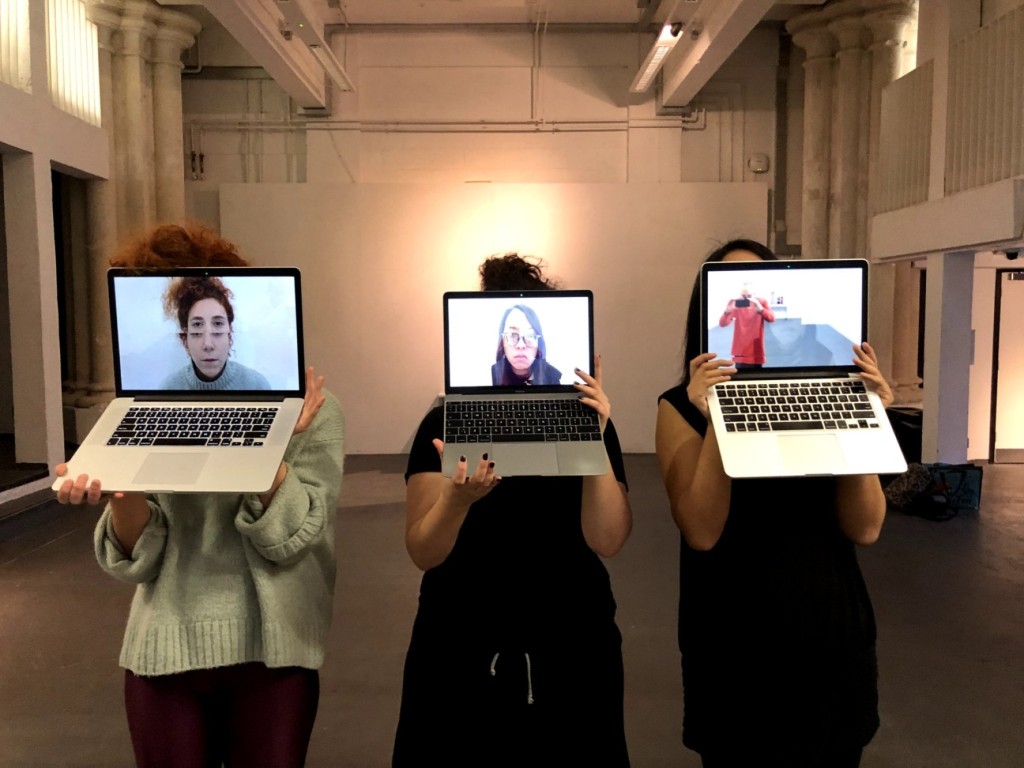
In this post I’ll reflect on Mirror, the interactive performance we staged for our group project, and explore how its concepts can be applied to online participatory art, which I’m investigating for my final research project.
In our presentation, I talked about creating a magic circle during our performance, where the artificial rules defined by the performance space replace reality. In some way, it’s easier to create this boundary in physical space and time, because we can clearly define a zone for the interactivity to happen. The audience can focus only on the performance.
On the internet, the interactive artwork occupies the same context as everything else the user can do in their browser. The time when users interact is asynchronous, and the spaces are diverse and unknowable. At the same time, online artwork has the possibility to permeate into everyday life. The genre of pervasive games exploits this; I’ll explore this in a future post.
Our different performance iterations made us realize it’s important to set up a structure for interaction, with set rules and affordances. Our audience interacted more readily with the frame, because we had demonstrated a structure for them to act in: copy the person on the other side. Interacting with mirrors and laptops was much less defined, so our audience didn’t know what to do.
Online, the structure is determined by the user interface. Encoding structure makes the rules more rigid, as the code determines what the user can do. However, there are many ways for users to act disobediently online. Code can be hacked. The internet also enables emergent ways to disrupt. I recently listened to a Reply All podcast episode, “I’ve Killed People and I Have Hostages,” which reported on how viewers of Twitch livestreams can swat the streamer, making police officers show up on the stream. Online creators have much less control over what audience members can do, and the internet opens up so many disruptive possibilities.
Finally, in Mirror, we used technology as a prop and an allegory. We used laptop cameras to film and process audience members’ faces, and hoped to evoke the culture of surveillance. However, we didn’t explore the networking capabilities of technology. The curator Rachel Falconer raised this question in her feedback to our presentation, asking whether we could expand the technology to remote presence and control. In my research project, I hope to explore the potential of network technologies in interactive performance.